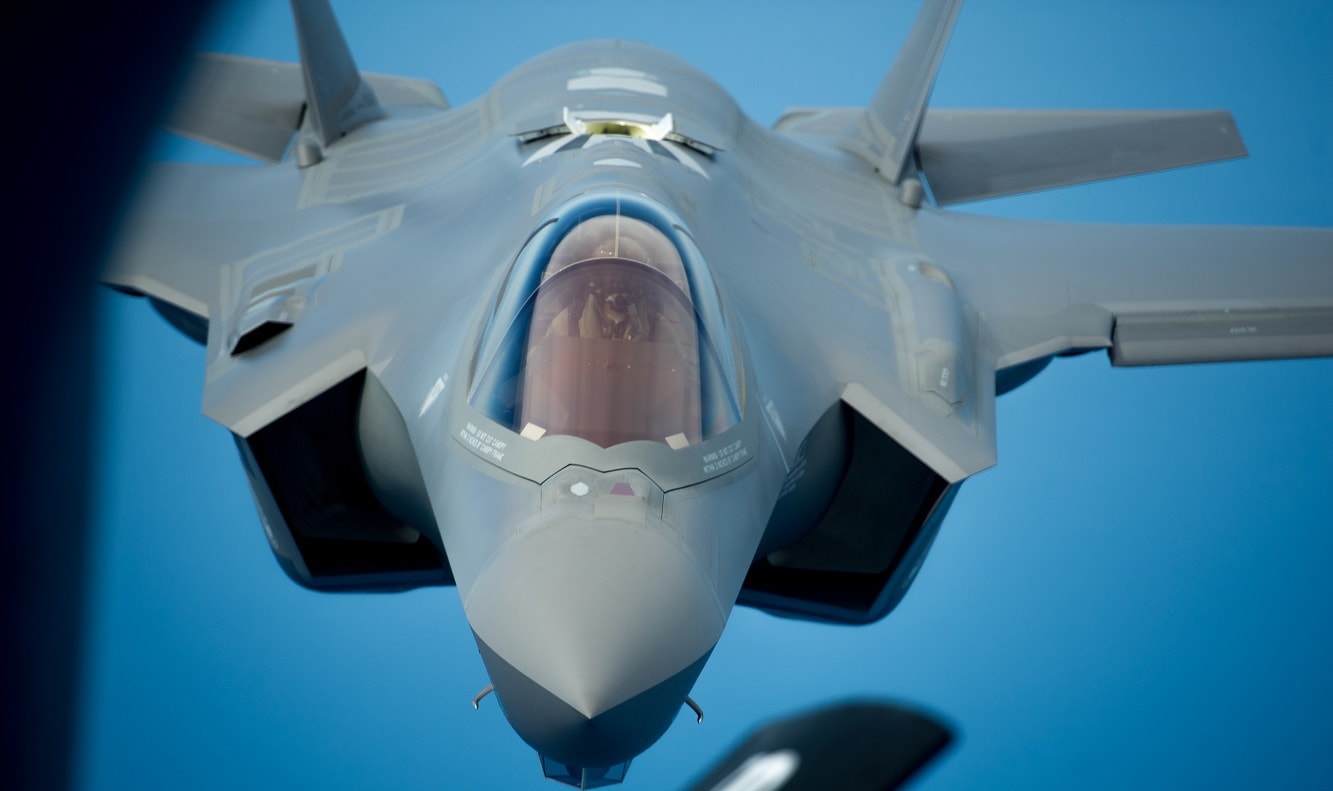The F-35 Stealth Fighter could soon be able to drop a nuclear war. That would be a development Russia and China would hate for sure: Just recently, the Federation of American Scientists reported that NATO has quietly added the United Kingdom to the list of nuclear weapons storage locations that are being upgraded. Royal Air Force Lakenheath, which last December became the home to the reactivated United States Air Force 495th Fighter Squadron, “The Valkyries,” has apparently been added to the “active sites” for nuclear weapon storage.
The Valkyries are the first F-35A Lightning II squadron to be based at Lakenheath, which has been expanded to accommodate the fifth-generation stealth fighter.
Nuclear-Capable Warbird
The Lockheed Martin F-35 Lightning II is soon set to achieve its nuclear design certification, which will allow the multirole aircraft to carry the B61-12 nuclear gravity bomb. Multiple European countries are already operating the F-35, and are expected to use it to replace the aging fleets of General Dynamics F-16 Fighting Falcons and Panavia Tornados that are currently used to fulfill NATO’s nuclear sharing agreement.
Last October, two F-35A Lightning II aircraft successfully released B61-12 Joint Test Assemblies, or JTAs, during the aircraft’s first Full Weapon System Demonstration, completing the final flight test exercise of the nuclear design certification process at Nellis Air Force Base (AFB), Nevada.
The 422nd and 59th Test and Evaluation Squadrons led the United States Air Force’s Air Combat Command’s portion of the test effort, with airmen from the 57th Aircraft Maintenance Squadron, 926th Aircraft Maintenance Squadron and Bolt Aircraft Maintenance Unit leading all maintenance efforts.
Once airborne, test pilots flew their F-35s to the Tonopah Test Range and released two B61-12 JTAs from operationally realistic flight envelopes. It was the first release of the most representative B61-12 test asset from an operationally-representative F-35A.
“The B61 series weapons are tactical gravity nuclear weapons that can be used on Dual Capable Aircraft like the F-15E (Strike Eagle) and F-16C/D (Fighting Falcon),” said Lt. Col Daniel Jackson, Headquarters ACC Strategic Deterrence and Nuclear Integration division chief, following the most recent test. “Having a fifth-generation DCA fighter aircraft with this capability brings an entirely new strategic-level capability that strengthens our nation’s nuclear deterrence mission.”
Bombs Away
The multirole F-35 is primarily thought of as a fighter aircraft, yet fighter planes and other attack aircraft have been equipped and trained for the dual conventional-nuclear role since the 1950s. The concept first originated to deter or fight back against a Russian nuclear attack on NATO.
The F-35, which can operate in stealth mode, has been seen to be ideally suited to carrying nuclear weapons as it could evade enemy radar and air-defense systems. The advanced and highly capable aircraft could thus fill an important role in the U.S. military’s “nuclear triad” – which consists of land-based intercontinental ballistic missiles, air-launched cruise missiles and gravity bombs, and submarine-fired missiles.
“The B-2 bomber was the most prominent nuclear-capable stealth aircraft,” Jackson added. “Adding ‘nuclear capable’ to a fifth-gen fighter that already brings several conventional-level capabilities to the table adds strategic-level implication to this jet.”
The B61-12 is essentially a refurbished, consolidated version of earlier nuclear gravity bombs that will offer four blast options measuring from 0.3 to 50 kilotons, or more than double the estimated yield of “Fat Man,” which was the larger of two nuclear bombs the U.S. dropped in Japan in 1945.
The U.S. currently plans to produce a total of 480 B61-12s from fiscal 2022 to 2025 and also phase out those with much higher yields. Experts estimate the U.S. now owns 680 B61s in total, including 230 for non-strategic platforms including fighters.
Of course, not all aircraft will become nuclear-capable upon full certification in support of real-world operations. Only those units with a nuclear mission will be given the hardware and manpower necessary to configure and maintain nuclear-capable F-35s.
Now a Senior Editor for 1945, Peter Suciu is a Michigan-based writer who has contributed to more than four dozen magazines, newspapers and websites. He regularly writes about military hardware, and is the author of several books on military headgear including A Gallery of Military Headdress, which is available on Amazon.com. Peter is also a Contributing Writer for Forbes.

